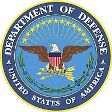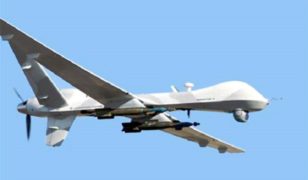OUSD(I) to hold solutions meeting
 On January 29, the Office of the Undersecretary of Defense for Intelligence announced an upcoming solutions meeting. Applications must be received by 5:00 p.m. EST on February 27.
On January 29, the Office of the Undersecretary of Defense for Intelligence announced an upcoming solutions meeting. Applications must be received by 5:00 p.m. EST on February 27.
The Department of Defense, Office of the Undersecretary of Defense for Acquisition, Technology and Logistics (OUSD(AT&L)) Rapid Reaction Technology Office (RRTO) will conduct a Solutions Meeting on behalf of OUSD(I) in McLean, VA in May 2018. The Meeting provides selected innovative companies with an opportunity to make short technical presentations to government representatives about their technologies and products. There is a potential for companies to be selected for pilot projects or experimentation if their technology appears to match the needs.
OUSD(I) is looking for innovative technologies and capabilities in the following areas:
Predictive Analytics
– Big Data algorithms
– Predict changes in status quo patterns (e.g. political unrest, disease outbreak, etc.)
– Incorporate non-traditional data sources
– Recognize historical behaviors, patterns, and context
– Perform multi-modal modeling and analysis to explore what-if scenarios
– Risk modeling for critical technologies protectionExtend the Enterprise to the Edge
– Analytic capability in isolated, edge, and low bandwidth/computing environments
– Intelligent synchronization with bandwidth/access limited communications
– Modular and interoperable analytic platforms and software
– Distributed cloud computing, storage, applications for remote environments
– Compression or improved bandwidth efficient dissemination
– Multi-level security solutionsData Fusion
– Correlate, integrate, and fuse disparate data sources
– Federated data sources/analytic environments
– Digitalize legacy archives
– Make segmented digital files discoverableBusiness Intelligence and Workflow
– Filter and process information to achieve understanding
– Monitor current missions and threat environments
– Integrate processing, management of current and historical enterprise data
– Capture workflow and cognitive processes for analysis
– Develop and coordinate formal products across large, distributed workforce
– Malicious and insider threat detection
– Automated/assisted classification marking and releasibilityData Provenance
– Data lineage and authorship tracking
– Historical record of products and its origins
– Data assurance
– Blockchain and blockchain enabled processesData Analytics / Machine Learning / Artificial Intelligence
– Autonomous data organization
– Extract relevant content and apply context
– Filter and process information to achieve understanding
– Correlate disparate datasets
– Gather, sift, filter, clean and/or fuse data automatically
– Generate synthetic data for algorithm training purposes
– Data labeling at scaleVisualization / Cartography
– Integrate high and low-resolution imagery
– Discover, filter, and visualize data both spatially and temporally
– Configurable displays and software interfaces to enable optimal decision making
Full information is available here.
Source: FedBizOpps







